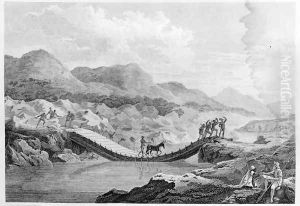Park, Mungo Paintings
Mungo Park was not an artist in the traditional sense of a painter or sculptor, but rather an explorer whose life story was one of adventure and discovery. Born on September 11, 1771, in Selkirkshire, Scotland, Park was the seventh of thirteen children in a tenant farming family. He developed an interest in nature and the world beyond his rural upbringing, which led him to study medicine at the University of Edinburgh.
Park's transition from medicine to exploration happened when he was recommended for an exploration job in Africa by Sir Joseph Banks, who was the president of the Royal Society. In 1795, Park embarked on his first major journey, which was to chart the course of the Niger River in West Africa. His travels were fraught with difficulties, including illness and imprisonment by a Moorish chief, but he eventually succeeded in providing valuable information about parts of West Africa that were largely unknown to Europeans at the time.
Park documented his journey in a book titled 'Travels in the Interior Districts of Africa' which was published in 1799. This book was a success and made him a well-known figure in Britain. Despite the hardships he faced during his first journey, Park's fascination with Africa remained, and he returned for a second expedition in 1805, with the aim of finding the source of the Niger River.
Tragically, Park's second expedition ended in disaster. After much struggle, including losing many of his party to disease and conflict, Park's expedition was ambushed by local tribesmen, and he is believed to have drowned in the Bani River, a tributary of the Niger River, in late 1806. His exact date of death is not known, but it is generally accepted to have occurred in that year.
Although Park was not an artist, his contributions to the mapping and understanding of West Africa were significant. His written accounts provided a wealth of information and his name is remembered as one of the great British explorers of Africa. His life and explorations have influenced not only the field of geography but also literature and the public's imagination regarding the 'Dark Continent' as Africa was once referred to.
